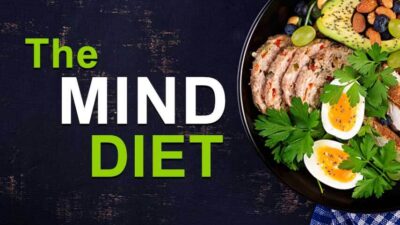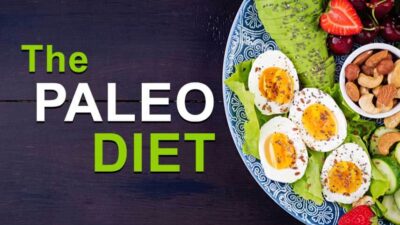The Diet Insiders Score 3.8/5
#5 in Best Diets Overall – Expert Reviews
This article reviews whether the Mayo Clinic Diet can help you lose weight.
What is Mayo Clinic and What does it do?
The Mayo Clinic is a renowned hospital system that has been providing sound health recommendations for many years. The Mayo Clinic Diet is a long-term weight loss program that focuses on healthy lifestyle changes, designed by the experts at the Mayo Clinic.
If achieving weight loss in a safe and healthy manner is the goal, then The Mayo Clinic Diet just might be the best option.
- Overall Score: 3.8
- Short-Term Weight Loss: 3.2
- Long-term Weight Loss: 4
- Easy to Follow: 3
- Healthy & Nutrition Quality: 4
THE BOTTOM LINE: The Mayo Clinic Diet aims to make healthy eating a lifelong habit, and it earned praise for its nutrition and safety.
Overview of The Mayo Clinic Diet & How Does It Work?
The Mayo Clinic Diet aims to help individuals lose weight while simultaneously improving their health. Unlike many other “diets” today, The Mayo Clinic diet revolves around the validated concept of lifestyle habit change.
The premise of the diet is adopting lasting, healthy weight-friendly habits while breaking unhealthy habits that led to weight gain in the first place.
The diet does not employ a “quick fix” or fad-type of mentality, making it a viable option for anyone seeking to lose excess weight and keep it off for good.
As evidenced in the “Mayo Clinic Diet, 2nd Edition” book and the online version of the diet, the program is encouraging, motivating and practical.
There are many helpful tips included ranging from self-esteem boosters to practical daily activity goals. Helpful tools such as the Habit-Tracker are also available to ensure success.
Additionally, The Mayo Clinic Diet experts emphasize the improvement in health and reduced risk of chronic diseases, such as heart disease and diabetes that come with following the recommendations.
This is an important notation as many diets simply promote weight loss despite potential negative health effects. This may also help individuals gain more motivation for sticking to the diet.
Phases and Duration
Phase 1: “Lose It!” – What does Phase 1 of The Mayo Clinic Diet entail?
The 2-week initial “Lose It!” phase of The Mayo Clinic diet is designed to jump-start the weight loss journey. The “Lose It!” phase primarily focuses on adopting new healthy habits, breaking unhealthy habits that led to weight gain, and challenging oneself to adopt “bonus” habits.
The diet includes a Habit-Tracker chart in the book or Habit-Tracking Tool included in the online version of The Mayo Clinic Diet to track progress. One can be expected to lose up to 6-10 pounds during this phase.
The program emphasizes the literature-backed validity and safety of the recommendations made to achieve this level of weight loss.
Phase 2: “Live It!” – What does Phase 2 of The Mayo Clinic Diet entail?
As indicated in the title, the “Live It!” phase of The Mayo Clinic Diet is intended to last for life. The goal of this phase is to promote lifelong healthy habits while educating readers on choosing healthy foods in appropriate portion sizes to facilitate sustainable weight loss. This phase also strongly encourages adding daily physical activity.
Weight loss during this phase may occur at the safe and healthy rate of 1-2 pounds per week. The “Live It!” phase may also help individuals maintain their goal weight indefinitely.
The “Live It!” phase defers exact food selection and meal planning responsibilities to the individual, which helps give a sense of autonomy. There are, however, several sample meal plans included in the diet, which can be adjusted for each calorie target.
A general calorie target is chosen based upon different factors for everyone, as a guide for daily energy intake.
Guidelines for consuming adequate nutrient-intake for each allotted calorie goal are based upon “The Mayo Clinic Diet” food pyramid.
The pyramid strongly emphasizes a high intake of nutrient-dense, low-calorie fruits and vegetables, coupled with a balance of whole-grain carbohydrates, lean protein, low-fat dairy, and healthy fats.
Is the Mayo Clinic Diet Effective for Weight Loss and Other Health Improvements?
The Mayo Clinic Diet team base their weight-loss and health-promoting strategies on research-validated techniques, making it a sustainable option for anyone in need of weight loss and health improvements.
The Mayo Clinic’s food pyramid strongly encourages the daily intake of high-nutrient and lower-energy foods such as fruits and vegetables, which are associated with a decreased risk of chronic disease.
Also, weight loss itself is associated with lower risks of many chronic ailments. Physical activity, which yields numerous health benefits, is strongly recommended for this program.
It is recommended to incorporate at least 30 minutes of exercise daily to promote weight loss and health improvements, while also moving more throughout the day.
Recommendations also state that increasing activity above 30 minutes per day yields even greater health and weight benefits.
Pros of The Mayo Clinic Diet
- Revolves around improving daily health habits which lead to long-term weight loss
- Unlike many other diets, focuses on both weight loss and chronic disease prevention
- Assesses levels of motivation to change behaviors through an initial quiz; it is widely accepted that readiness to change is a key determinant of long-term success
- Discourages austere calorie-counting which may lead to food obsession
- To promote energy balance without calorie counting, useful everyday tools such as food-portion guides, and comparison charts between food and everyday objects are provided
- The diet does not discourage any person’s motivation source as “wrong’ and values all motivating factors as important
- The book utilizes a “Jot It’ icon to remind readers when to jot their progress down
- Accountability tool provided via “Mayo Clinic Diet journal” included in book
- The diet allots solid personal responsibility to individuals in making lifestyle changes
Cons of The Mayo Clinic Diet
- The “Live It” phase requires planning intake ahead regarding the general meal pattern for the person’s calorie goal, which requires one to be motivated to follow the program
- Excludes dining out and snacking (except fruit and vegetables) in the first 2 weeks
- Requires planning, logging habits, and weight to promote success, which may be burdensome for some people
- Those looking for a massive weight loss (usually achieved through an unsustainable method) rapidly could be discouraged if they do not prioritize a healthy lifestyle change
Who Should Try the Mayo Clinic Diet?
Those seeking to lose weight and improve their health through a practical lifestyle-change approach should try The Mayo Clinic Diet.
Individuals who do not want to follow a fad-like, quick-weight loss regime that often results in weight regain should try The Mayo Clinic Diet.
Who Should Not Try Mayo Clinic Diet?
Given that changing old habits and adopting new ones is challenging, those undergoing major life stressors may need to wait until they can allot more time and energy towards starting The Mayo Clinic Diet.
Additionally, individuals who are not highly motivated to instill new healthy habits should wait until their level of readiness increases.
Those who are not motivated to become healthier and lose weight may find it helpful to discuss this with their physician.
What Foods can you eat on Mayo Clinic Diet?
Foods that are strongly encouraged on The Mayo Clinic Diet include naturally nutrient-rich whole foods such as fruits and vegetables, whole grain fiber-rich carbohydrates, and lesser but adequate amounts of protein sources such as legumes, lentils, beans, peas, and high-quality lean animal protein.
It is also recommended to make most snacks based on vegetables and fruits with no added sugar. Sweets and alcohol (excluded in the first two weeks) are only recommended in small amounts during the “Live It!” phase as to promote health and long-term weight maintenance.
What Foods should you Limit and Avoid on the Mayo Clinic Diet?
Foods that are limited on The Mayo Clinic Diet include foods with added sugars, excess dietary fat, processed and red meat, and processed foods high in empty calories and devoid of nutrition.
Alcohol and foods with added sugar are excluded during the “Lose It!” phase but are allowed in moderation during the “Live It!” phase.
Other Things to Consider Before Trying the Mayo Clinic Diet Plan
It is advised to consult a physician before embarking on a diet, exercise, and weight-loss program. Any concerns regarding health and medication must be discussed with a physician before starting a diet program.
How to Get Started with the Mayo Clinic Diet?
“The Mayo Clinic Diet” material can be accessed through the official book, “The Mayo Clinic Diet, 2nd Edition”.
The Mayo Clinic also offers an integrative online version of the diet program that offers many resources on educational material, habit trackers, food serving guides, recipes, and exercise routines.
The Mayo Clinic Diet Meal Plan & Sample Menu
The diet offers a wide variety of recipes that include servings from each Mayo Clinic Diet Pyramid food group (example: 2 servings carbohydrates), making it easy to fit them into each calorie-goal regimen.
Following are two 1200-calorie sample menus excerpted from The Mayo Clinic Diet and one standard diet menu that can be altered to fit each calorie-targeted regime.
Day 1 Sample Menu: 1200 calories
–Breakfast: 1/2 cup cooked oatmeal with 1 cup milk and 2 tablespoons raisins, 1/4 cup mango, calorie-free beverage
–Lunch: Quinoa and sweet potato cakes, tossed salad with fat-free dressing, calorie-free beverage
–Dinner: 1 pita pizza, 3/4 cup mixed fruit, calorie-free beverage
–Snack: 1 cup sliced bell peppers and 2 tablespoons hummus
Source: https://www.mayoclinic.org/healthy-lifestyle/weight-loss/in-depth/mayo-clinic-diet/art-20045460
Day 2 Sample Menu: 1200 calories
–Breakfast: 3/4 cup hot whole-grain cereal, 1 small banana, calorie-free beverage
–Lunch: Tossed salad (2 cups romaine, 1/4 onion, 1/4 cup mushrooms, 1 medium tomato, 1 hard-boiled egg, 1/2 cup low-fat shredded cheddar cheese), 1 whole wheat dinner roll, 1 ½ tsp butter, ½ cup cubed pineapple, calorie-free beverage
–Dinner: 3 ounces seared scallops in 1 teaspoon olive oil, Garlic mashed cauliflower potatoes, ½ cup beets, calorie-free beverage
–Snack: (any time): 2 plums, 8 wheat crackers
Source: https://www.mayoclinic.org/healthy-lifestyle/nutrition-and-healthy-eating/in-depth/hlv-20049477
Day 3 Sample Menu (can be adjusted for individual daily calorie goal)
–Breakfast: 1 whole-grain bagel, 3 tbsp. fat-free cream cheese, 1 small apple, 1 c. skim milk, calorie-free beverage
–Lunch: 1 c. vegetable soup, 2 c. lettuce, 1 medium tomato cut into wedges, 2 tbsp. fat-free salad dressing, 1 c. reduced-calorie, fat-free yogurt mixed with ¾ c. berries, calorie-free beverage
–Dinner: 2 ½ oz. boneless, skinless chicken breast, 3 red-skinned baby potatoes with fresh parsley, 2 c. steamed broccoli, 2 tsp. trans fat-free margarine-like spread, calorie-free beverage
–Snack: 1 small pear
Source: “The Mayo Clinic Diet, 2nd Edition” Book
Take-Home Message
The Mayo Clinic Diet promotes a healthy and sustainable weight loss by incorporating healthy habits while breaking old, unhealthy habits.
It serves as a long-term plan for anyone looking to lose excess weight and change lifestyle habits for good.
Note – *Results may vary.







 This article changed my life!
This article changed my life! This article was informative.
This article was informative. I have a medical question.
I have a medical question.
 This article contains incorrect information.
This article contains incorrect information. This article doesn’t have the information I’m looking for.
This article doesn’t have the information I’m looking for.